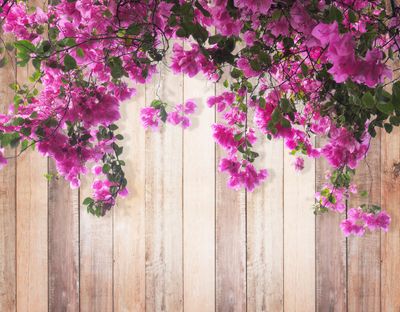About Vines for Windy Locations
It is true that sustained winds or gusts can wreak havoc with many plants. As the plants are tugged at by the wind, the roots are pulled from the soil, making them weaker and weaker. They may lose their ability to absorb water, which leads to smaller plants, unusual development, and even death. Winds may also break stems, branches, or even trunks, which disrupt the plants ability to uptake water and nourishment. Also, drying winds may take their toll on plants by reducing air temps and increasing water evaporation. Some plants are more susceptible to winds than others. They may be more pliable with stems that bend without breaking, have narrower leaves that don’t catch the wind, and/or waxy leaves that conserve moisture. Among these are wind resistant vines – those that are able to withstand sustained or gusty wind conditions.
Types of Windy Garden Vines
If you live in the warmer regions of USDA zones 9-10, the perfect beautiful vining plant for a windy garden is the bougainvillea. Bougainvilleas are woody vines that are native to the tropical regions of South American from Brazil west into Peru and southern Argentina. It is a perennial evergreen that not only tolerates winds but does fairly well in drought conditions. It has lovely, heart-shaped leaves and brilliantly colored blooms of pink, orange, purple, burgundy, white, or green. Another beauty for the garden is Clematis ‘Jackmanii.’ Introduced in 1862, this clematis vine blooms with a profusion of velvety purple flowers contrasting with greenish-cream anthers. This deciduous vine is a Type 3 clematis, which means it enjoys being pruned down nearly to the ground each year. It will bloom profusely off new shoots the next year. It is hardy to zones 4-11. ‘Flava’ trumpet vine is yet another deciduous vining plant for windy gardens. It can grow voraciously up to 40 feet (12 m.) in length. Because of its rampant growth, many gardeners prune it often to restrain its size, but because it grows rapidly and prodigiously, it’s a great choice for a quick solution where coverage is needed. Suited to USDA zones 4-10, this trumpet vine has dark green, glossy leaves and vibrant, trumpet-shaped blooms. If you are really looking for a wind resistant vine that smells as good as it looks, try growing jasmine. Hardy to USDA zones 7-10, this vine is an evergreen that can grow a foot or two (30.5-61 cm.) each year. After a few years, it can attain a height of up to 15 feet (5 m.). It blooms with sprays of small white blossoms. Lastly, potato vine is an evergreen vine that can attain heights of up to 20 feet (6 m.). It blooms with blue and white blossoms accented by yellow anthers. Like jasmine, potato vine is a good choice for an aromatic vine. Hardy to zones 8-10, potato vines like sun and need little in the way of maintenance.
